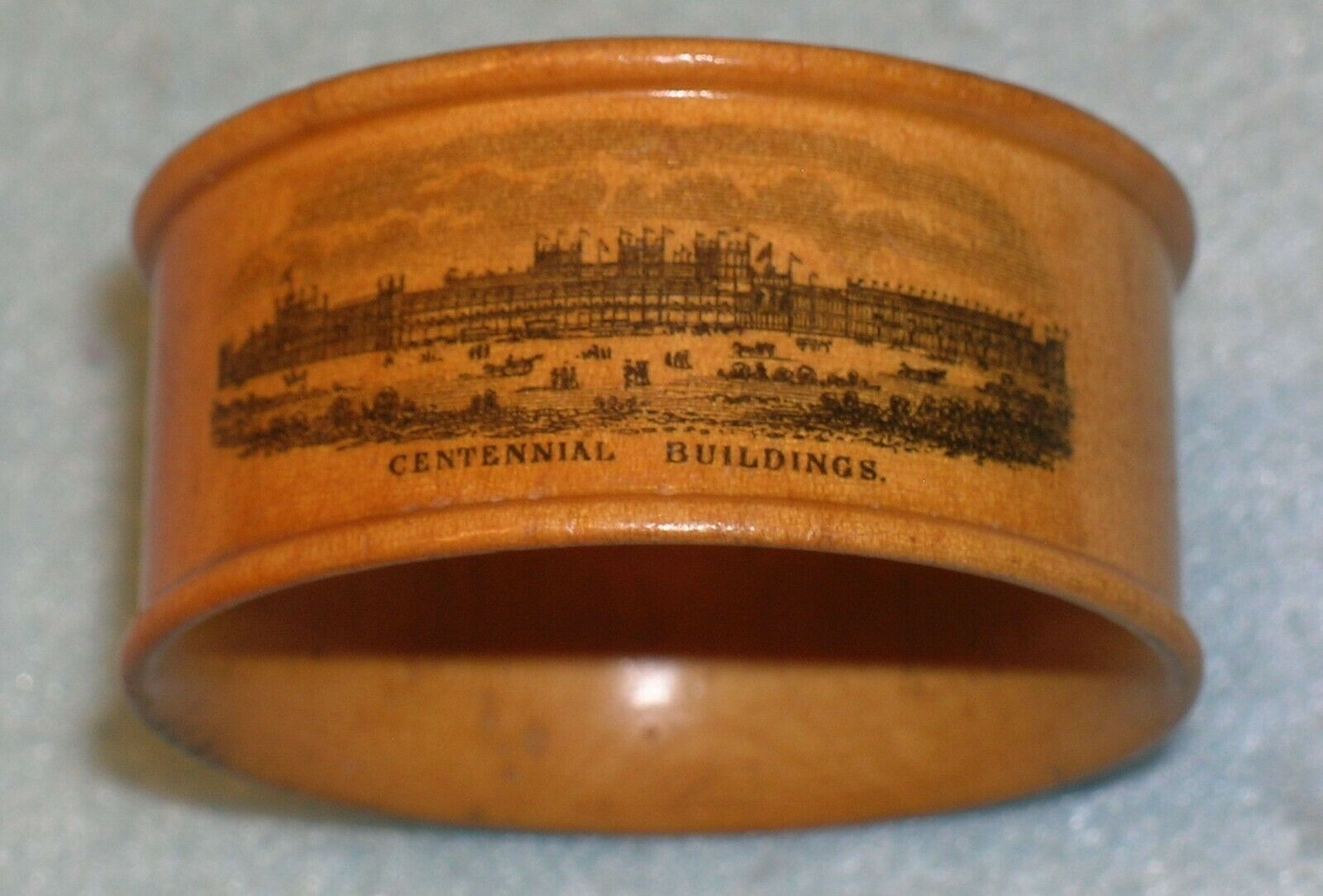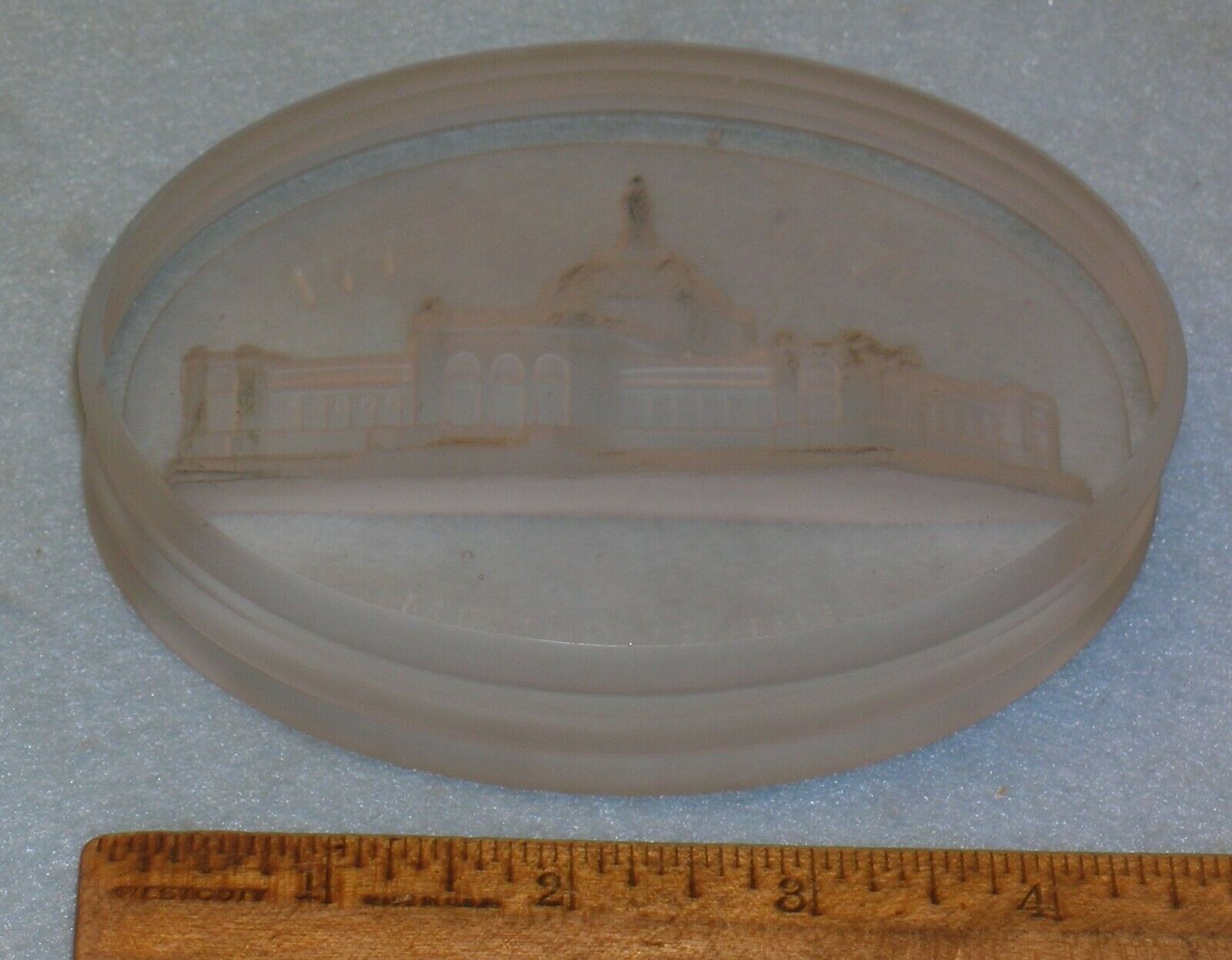-40%
1876 INTERNATIONAL EXHIBITION AT PHILADELPHIA ADMISSION TICKET, RARITY
$ 12.13
- Description
- Size Guide
Description
1876 PHILADELPHIAINTERNATIONAL EXHIBITION
GATE ADMISSION TICKET.
👉 VERY COLLECTIBLE 👈
TYPE OF SCRIPOPHILY, EXONUMIA, NOTAPHILY:
Gate admission ticket.
EXHIBITION NAME:
International Exhibition at Philadelphia, 1876.
EXHIBITION AKA:
The Centennial International Exhibition of 1876.
EXHIBITION AKA:
International Exhibition of Arts, Manufactures and Products of the Soil and Mine.
CITY & STATE:
Philadelphia, Pennsylvania.
YEAR:
1876.
TICKET AGE:
140-years old.
TICKET PRINTED BY:
The Philadelphia Bank Note Company.
INCORPORATED SECURITY FEATURES:
Special paper, engraved lithographic printing process.
TICKET SERIAL NUMBER:
78796 (red serial number).
SERIES:
“A.”
TYPE OF DOCUMENT:
Admission ticket.
GENERAL COLOR(S):
White paper with black and red inks.
MEASUREMENTS:
3⅞" x 2¼".
EMBOSSING:
None noted.
TAXATION/REVENUE/OTHER STAMPS:
None.
WATERMARKS ON PAPER:
None.
FOLDS / CREASES:
Appears to be none.
CORNERS:
Excellent condition!
HOLES, TEARS, DAMAGE:
No stains, pen or pencil marks. Little to no "browning" from age. No water marks or soiling noted.
ADDITIONAL NOTES:
This ticket is in very-good condition.
ABOUT THE INTERNATIONAL EXHIBITION AT PHILADELPHIA:
The International Exhibition, actually known as The Centennial International Exhibition of 1876, was the first official World's Fair in the United States. It was held in Philadelphia, Pennsylvania, from May 10 to November 10, 1876, to celebrate the 100th anniversary of the signing of the Declaration of Independence in Philadelphia. Officially named the International Exhibition of Arts, Manufactures and Products of the Soil and Mine, it was held in Fairmount Park along the Schuylkill River on fairgrounds designed by Herman J. Schwarzmann. Nearly 10-million visitors attended the exhibition and thirty-seven countries participated in it.
More than 200 buildings were constructed within the Exposition's grounds, which were surrounded by a fence nearly three miles long. There were five main buildings in the exhibition. They were: The Main Exhibition Building, Memorial Hall, Machinery Hall, Agricultural Hall, and Horticultural Hall. Apart from these buildings, there were separate buildings for state, federal, foreign, corporate, and public comfort buildings. This strategy of numerous buildings in one exposition, set it apart from the previous fairs around the world that relied exclusively on having one or a few large buildings.
Mass-produced products and new inventions were on display at the 1876 World Fair, many found within the walls of Machinery hall. Some of the main inventions on display included sewing machines, typewriters, stoves, lanterns and guns, plus horse-drawn wagons, carriages and agricultural equipment.
The exposition also featured many well-known items of today such as; Alexander Graham Bell's first telephone which was set up on opposite ends of Machinery Hall to demonstrate the transfer of human voice through wires, the Automatic telegraph system and electric pen by Thomas Edison, screw-cutting machines that drastically improved the production of screws and bolts from 8,000 to 100,000 a day, and a universal grinding machine by Brown & Sharpe Manufacturing Co. (Research credited and our thanks to all of the folks that make Wikipedia.Org a reality).
ABOUT THE TICKET'S PRINTER:
This ticket was printed by the Philadelphia Bank Note Company who mass-produced tickets by lithographic process for the exhibition. Anticipating counterfeiting problems and fraud, the International Exhibition turned to a bank note printer for their tickets knowing the printer would utilize a anti-counterfeiting techniques such as a special paper and precision engraving. The exhibition also incorporated a "multi-check" admission check that prevented fraud while at the same time provided accurate statistics.
Prior to failing, the Philadelphia Bank Note Company was one of the last independent bank note engraving companies. An article in the Wednesday, September 1879 edition of The Times from Philadelphia (Page 3) reported that numerous creditors had received favorable judgments against the the PBNC and the sheriff had been directed by the court to seize the company's assets which had been combined with the assets of another company.














